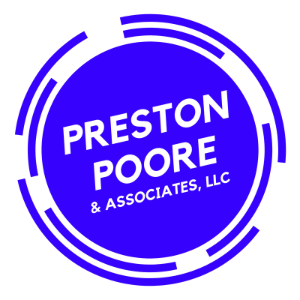How to Make Employee Engagement Stick
Printer-Friendly Version
Have you ever noticed that sticky notes easily fall off a flip chart? One possible reason for this is that the adhesive is not applied correctly. During a design thinking session, I learned a hack that could be useful – if you rotate the sticky note 90° and place it on the surface with the adhesive strip in a vertical position, it should hold its position much longer. Don’t believe me? Give it a try and see the results for yourself!
What’s a sticky note got to do with employee engagement? Although many organizations mean well by emphasizing employee engagement, the improvement plans and initiatives don’t stick long-term due to leadership or organizational changes; organizational flux may negate workplace improvements, or new leaders may deprioritize engagement.
But what if you turn the sticky note 90° and approach employee engagement differently? Based on my experience leading multiple engagement teams or initiatives, I’ve observed four employee engagement phases and two ways to make it stick.
How?
Let’s begin with my working definition of employee engagement – the level of discretionary effort one is willing to put forth based on the relationship with their manager and the work environment.
Employee engagement directly affects business performance, and its influence on productivity, retention, customer loyalty, net income, and shareholder return is well-documented. Bottom line: The higher the level of employee engagement, the more successful the business will be; conversely, a low level of engagement will lead to unfavorable results.
Gallup’s findings this year are shocking: employee engagement has dropped to a record low of only 32%, meaning that almost 70% of employees are not engaged with their work.[i] This is an especially concerning figure when considering that 18% of employees are actively disengaged, meaning they are actively unhappy and potentially undermining their colleagues. This is an unsustainable situation for any organization.
If an employee engagement emphasis is the Holy Grail and is proven to drive positive results, why does it seem so elusive? And why do only 25% of companies have an engagement plan?[ii]
Maybe it’s due to leadership’s revolving door or the ever-evolving corporate restructuring. A wise man once told me that a new CEO or president’s only growth throttle was to undergo a merger/acquisition or reorganize the company.
I experienced the impact of new leadership and relentless restructuring firsthand. In my former company, I faced a constant sense of being up for re-election during my 20-year career. It felt like being a member of Congress, where I had to campaign for re-election every two years. Despite the challenging circumstances, I was able to survive 11 election cycles.
Based on where I was in the election cycle, my engagement level ebbed and flowed. I experienced what it meant to be highly engaged – to trust my managers and peers, to feel valued and that I made a valuable contribution, and to flourish in a positive work environment. I’ve had leaders that believed in me and involved me in meaningful work. On the other hand, I’ve suffered dreadful managers where I became disengaged and felt demoralized. I’ve learned from both; what to do from the inspirational leaders and what not to do from the rest.
I’ve also had the opportunity to lead employee engagement teams comprised of committed volunteers; one group drove a complete turn-around, and the other catalyzed a move from good to great. Lastly, I’ve directly managed teams where morale and engagement were low and helped turn them into high-performing teams.
Whether individually or leading a team, I’ve experienced the birth of new organizations or teams, the eager drive toward positive engagement, and delivering extraordinary results, only to be stopped in our tracks by a leadership change or organization restructure.
The Four Phases of Employee Engagement
As displayed in the chart, I’ve observed four Employee Engagement phases, including rewiring, results, rumors, and re-org.

- Rewiring phase. The new organization is announced, people are assigned new roles, and the rewiring and how things get done (i.e., how water flows through the pipes) typically takes six to eight months. Employee engagement lurches higher, but productivity is low.
- Results phase. Once the organization understands its vision, mission, and how it works to get things done, results materialize. At some point during the phase, upper management determines there is a need to focus on employee engagement. Committees are formed, charters are written, macro-level strategies are developed, and tactics are deployed. Employee engagement peaks with the proper emphasis, and productivity is high.
- Rumors phase. Changes in an organization are inevitable, and people begin to speculate. Surely enough, consultants are engaged, and HR representatives huddle in meetings. Employee engagement ebbs and productivity recedes.
- Reorg phase. The phase is filled with posturing, anxiety, and fear no matter how management roles out reorganization communication and timing. People sit on their hands and wait for the news about their job. Once their job status is determined, people exit immediately, while others stay and apply for open roles. It’s cold. It’s hard. Engagement emphasis stops. No wonder employee engagement is at its lowest point, and productivity is minimal at best.
Then the process starts all over again. In my estimation, organizations will never reach their potential if stymied by relentless instability.
Moving Toward Sticky Employee Engagement
Recently, a senior executive asked me about my Employee Engagement experience and if engagement can be improved long-term. I shared my thoughts on the above four Employee Engagement phases and clarified that it is indeed meaningful. However, durable engagement improvement depends on two factors.
First, the organization must sustain its “results phase” and continue progressing toward the vision and mission while empowering, energizing, and enabling employees. If the results phase is prolonged, the organization can reach its full potential, whether financial, innovation-based, or customer satisfaction.
The second part of the solution is to focus on “micro-leadership.” Recall my definition of employee engagement: The level of discretionary effort one is willing to put forth based on the relationship with their manager and work environment. The manager and direct report relationship is foundational. If the connection is strong, the organization will flourish. If weak, the organization will flounder.
To create sticky employee engagement regardless of the organizational circumstances, we need to develop leadership skills at the micro level, between managers and direct reports, where the rubber meets the road, including:
- Expressing empathy. Understand others, ask questions, listen, stand in someone else’s shoes, and show others you care for them.
- Building trust. Do what you say you will do, let others know who you are, share your values and what you stand for.
- Instilling purpose and meaning. Help associates understand why their roles exist, how their contribution adds value, and what success looks like.
- Coaching and developing. Conduct 360-degree assessments to identify strengths and skill gaps, create capability plans, hold frequent development discussions, and help others reach their potential.
- Appreciating and encouraging. Ensure associates know that they are valued and make a difference. Lift them during adversity and lavish praise when they succeed.
Lastly, I leave you with another question: What if you don’t focus on employee engagement?
Think about it.
Without an engagement focus, your organization will find itself in a doom loop. Morale will suffer, you’ll be surrounded by mediocrity, and your company will lose its competitive edge. Your customers will find alternate solutions. Your organization will drift into sameness and may go under. Not a pretty picture.
Be assured that investing in employee engagement will pay dividends.
Morale is an Organization’s Best Friend
Speaking of morale, I recently read an article in The Wall Street Journal about the lessons learned thus far from the Ukraine-Russia war. The author wrote, “The importance of morale to military success isn’t a new concept. More than two centuries ago, French emperor, Napoleon said morale was three times as important as the manpower and equipment on the battlefield, in a remark sometimes translated as: ‘In war, moral power is to physical as three parts out of four.’ Ukrainian troops, convinced of their moral cause and knowing they were fighting for the survival of their families and their country, beat back Russian forces who were involved in what they were told was a special military operation’.”[iii]
If you have morale, it will be your organization’s best friend.
To make employee engagement stick, I encourage executive management teams to recognize the need to stabilize their organization and develop effective leaders. If they do, they’ll reach their potential and deliver extraordinary results.
To learn more about how Preston can help your organization or team, visit prestonpoore.com.
[i] https://www.gallup.com/workplace/468233/employee-engagement-needs-rebound-2023.aspx
[ii] https://teambuilding.com/blog/employee-engagement-statistics
[iii] “The Conflict in Ukraine Offers Old-and New-Lessons in 21st Century Warfare,” Wall Street Journal, February 23, 2023

Preston Poore
I help leaders lead—without the buzzwords or boring theories. After years in the Fortune 500 world, I’ve seen it all—bad bosses, great teams, and more leadership fails than I can count. Now, I share real stories, practical tips, and the occasional hard-earned lesson to help you lead with confidence. Let’s figure this out together.
Discover Your Life Purpose
Do you wake up each day dreading the idea of spending another day at work? If you’ve failed to discover and build your life around your life purpose, you might feel dissatisfied with your life. Flip the script! Get this special eBook, discover your purpose, and begin living a more fulfilling life today!


